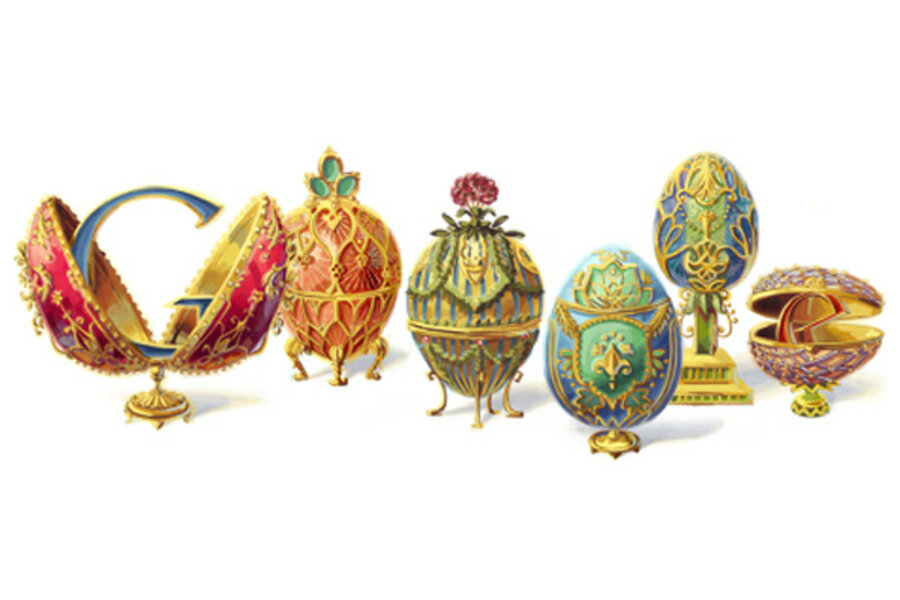How Peter Carl Fabergé turned Easter eggs into precious art
Loading...
Think of Easter eggs. What comes to mind? A whiff of vinegar? Chocolate wrapped in aluminum foil? Plastic shells with jellybeans inside?
Few people think of Peter Carl Fabergé, the subject of Wednesday's Google doodle. But his famous Faberge eggs – beautiful, intricate, and historic creations encased in precious metals and punctuated with jewels – started out as an Easter gift.
Fabergé's fortune is a true European story. He was trained in Germany, hired by Russian royalty, blessed with a luscious French name, and inspired by a Vatican-approved custom: the Easter egg.
Easter eggs didn't originate in Europe. Early Christians in Mesopotamia invented the practice long before the Pope officially sanctioned the idea in 1610. Originally, people stained chicken eggs red. The color represented the blood of Christ and the egg symbolized resurrection.
But by the late 1800s, when Fabergé became a full-fledged jeweler, Easter eggs had become much more. Some European aristocrats commissioned expensive jewelry-like eggs. They were pretty. Yet Fabergé was about to change the craft forever.
In 1885, Czar Alexander III had Fabergé design an Easter egg for his wife, Empress Maria. She grew up as a princess in Denmark, where there was already a famous ivory egg. Fabergé wanted to create a gift that resembled that egg, but would also surpass the original. He returned with a gold egg coated in white enamel. But the present held a secret. The shell opened, revealing a gold yolk inside. This hidden compartment held an additional treasure: a golden hen with a diamond and gold crown.
The royal family was so impressed that they ordered a new egg – often multiple eggs – almost every Easter after that. They weren't the only customers. Faberge eggs became famous and the pieces grew more elaborate with time. Some contain clocks or model ships. Some hang around necklaces. Some are almost a foot tall.
Fabergé's team created thousands of eggs. Actually, while Fabergé was an accomplished jeweler, he did not make any of the eggs himself, according to a biography by Bruce Schulman. Instead, his company hired world-class craftsmen, each with a particular specialty.
But there's a greater lesson in these eggs. According to Mr. Schulman, Fabergé changed the way Europe's upper class thought about jewelry.
"Until that time, many felt the value of jewelry was intrinsic, based upon the precious metals and stones," writes Schulman. "Faberge felt that the artistic creativity and fine craftsmanship of jewelry made it art that transcended bullion value."
Remember that next time you sit down to paint an Easter egg or set out to create any work of art. The materials don't matter. It's how you use them.
For more on how technology intersects daily life, follow Chris on Twitter @venturenaut.







